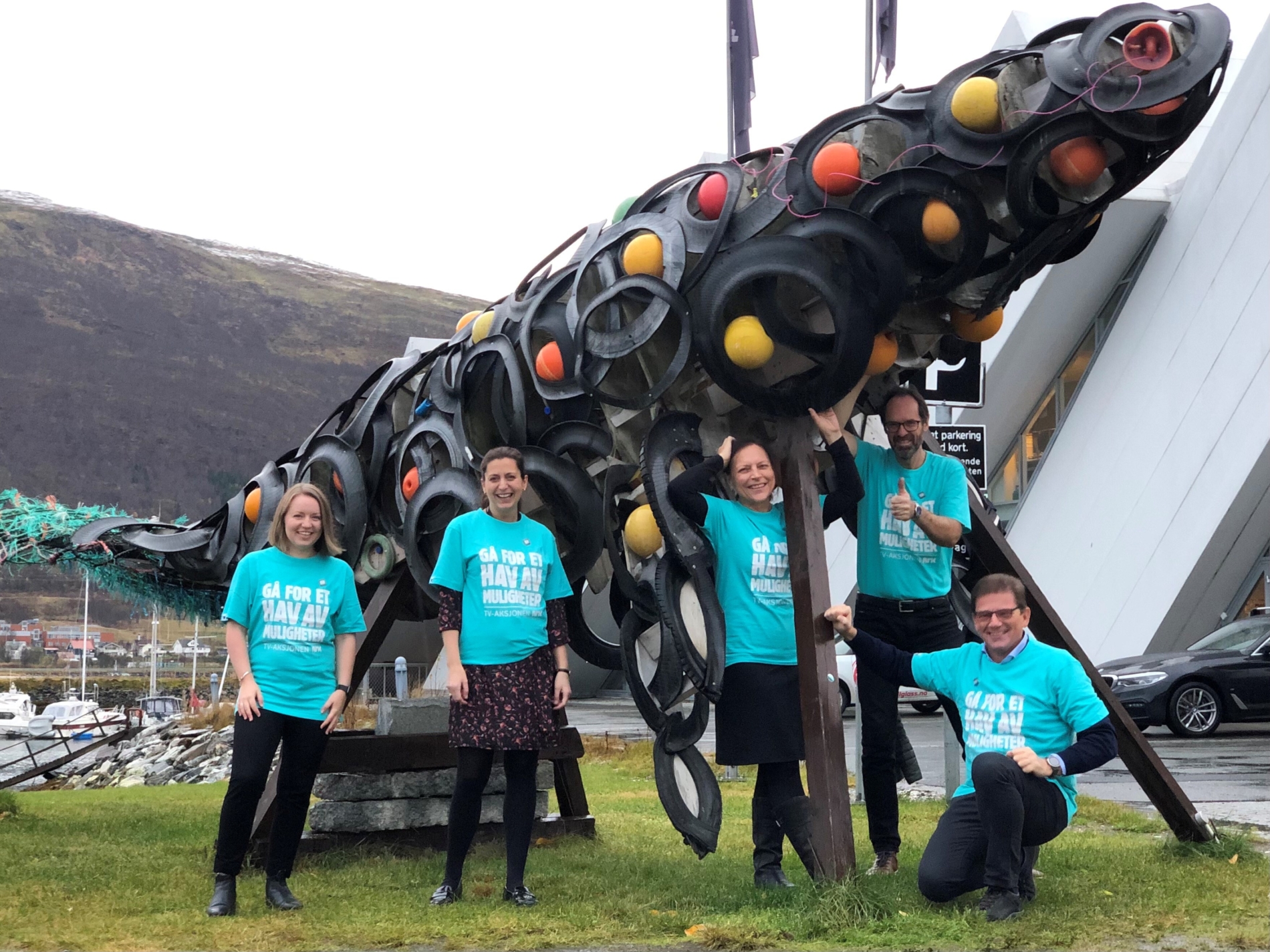Contributions are being coordinated through the plastics project Safe Harbour, and so far 40 000 kr has been collected.
– The Telethon is perfectly aligned with what we are trying to do in Safe Harbour. That’s why I think it’s great that partners in the project are joining forces and contributing to the Telethon together. That way we can emphasise that Safe Harbour is serious about reducing the amount of plastic in the ocean, and are aware the links between local and international levels. Plastic waste knows no boundaries, says Project Manager Anne Katrine Normann at Centre for the Ocean and the Arctic.
Fundraising will continue until 1 December, and among the contributors are Centre for the Ocean and the Arctic, together with Tromsø municipality, waste management firm Perpetuum, and Vonin Refa, which manufactures gear for fishing and aquaculture.
The Tromsø-based pilot project Safe Harbour was initiated in September 2020. Its aim is to implement systems and routines to prevent plastics used by fisheries and aquaculture industries from ending up in the sea and remaining there. The objective of the project is to ensure that marine plastics will enter a resource cycle after their first use – that they will be recycled and reused as long as is practical. To achieve this goal, it is critical that the entire plastic value chain is on board.
– We have actors from gear manufacturers, plastic suppliers, fisheries and aquaculture, waste management companies, ports, local authorities, and others who work with environment and safety. Together, we want to develop solutions for receiving and then reusing or repurposing plastic waste, says Normann.
This year’s NRK Telethon is focused on establishing or improving waste systems for more than 900 000 people in developing countries in Asia, so that plastic does not end up in the ocean. Like the Telethon, the Safe Harbour project is working on measures to prevent plastic pollution – with a spotlight on the local level. Most of the marine plastic waste in the High North comes from fisheries and aquaculture, and one contributing factor is the lack of suitable waste reception facilities in Norwegian ports.
– New research shows that the public generally assumes that the plastic waste in our waters comes from afar, for example from Asia. It is correct that we find a lot of trash from faraway sources, but the vast majority of it comes from vessels in our own waters, both Norwegian vessels, and foreign vessels fishing in Norwegian waters. Therefore, it’s important that we help reduce plastic pollution at a global level, while also seeing to it that our own oceans aren’t contributing plastic waste, explains Normann.
In conjunction with the Telethon, Centre for the Ocean and the Arctic launched the first episode of its podcast Kystpuls. There, guests Karoline Andaur of WWF, Rolf-Ørjan Høgset of In the Same Boat, and Marius Storli of North Agency talk about a lesser known side of the plastic problem. The podcast (in Norwegian) can be found here: https://pod.space/kystpuls

